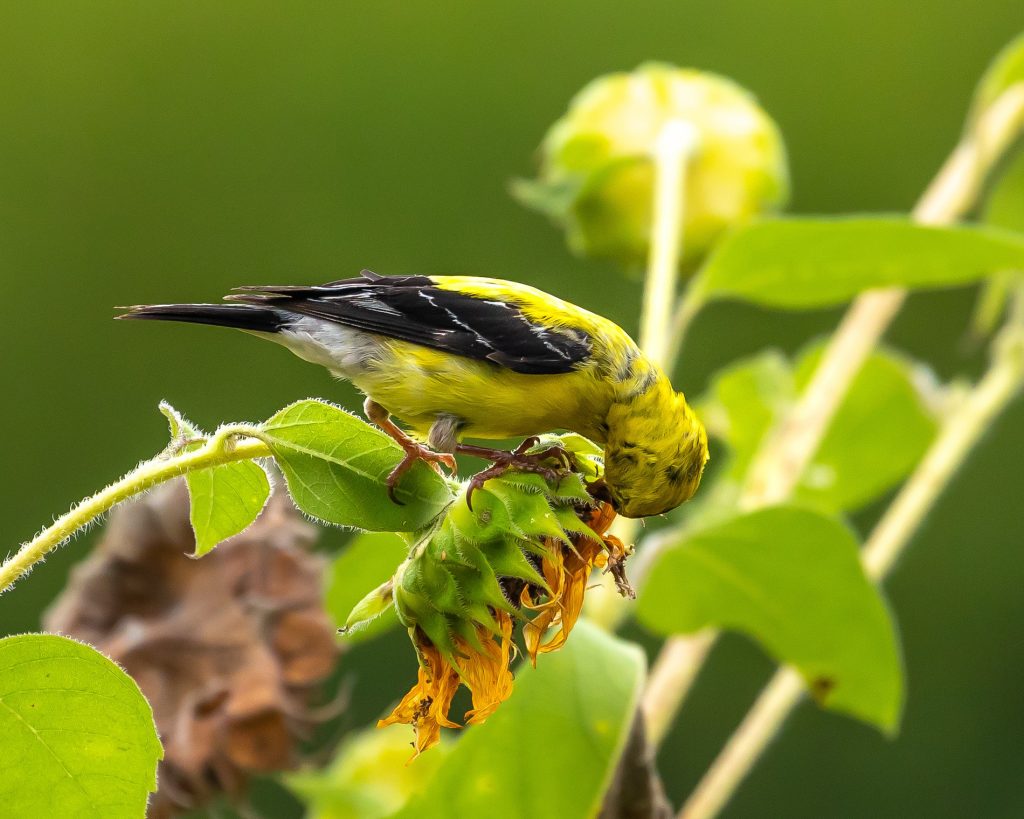WINTER WILDSCAPES: Wonderlands for learning
Winter is in full swing, and nature’s response is a fascinating study for children on school break. Nature knowledge supports Virginia’s Standards of Learning (SOL) objectives. Outdoor exploration of winter wildscapes also fosters youngsters’ appreciation for the natural world, which can last a lifetime.
To help your child or grandchild understand nature’s seasonal changes, talk about ways people prepare for winter, such as finding their snow shovel and pulling out their overcoat and gloves. Share that plants and animals, including birds and insects, prepare in their own unique ways, too. Some migrate. Others hibernate or adapt for cold-weather survival in their native habitat.
For those that migrate, the journey typically begins in autumn. Point skyward when Canada geese honk their way south in v-formation. Note that many species of moths and butterflies are no longer in the garden because they migrate, too. For example, using a map, trace the Monarch butterfly’s long-distance travel south to Mexico, where it seeks a warm winter home.
Where do other insects go? Some species adjust their location, but not according to the compass. The Japanese beetle tunnels deeper into the soil during winter. The earthworm digs down, too – sometimes 6 feet or more. When snow blankets the ground, its insulating warmth supports these and other burrowing insects’ cold-temperature survival.
Certain species of fish migrate, too. Others slow their metabolic rate and seek deeper waters.
Hibernation is the cold-weather response of ground squirrels, skunks, chipmunks and bears. Did you know that snakes and some bats hibernate, too? Point out tree cavities, brush piles and other habitats that wildlife calls home. Discuss the simple definition of hibernation, which is when an animal’s processes slow and it enters a deep sleep. Some wildlife hibernates the entire winter, while others do so for shorter time periods. Typically, hibernating animals survive by living on fat stored earlier in the year.
Another natural adaptation that helps animals overwinter is the production of thicker coats to handle winter’s chill. Even the coats of pets may become thicker in preparation for the seasonal cold. Other animals’ coats change color so camouflaged by snow, such as the arctic fox in northerly regions.
As the seasons change, so do certain birds’ eating habits. Since insects are not readily available, cardinals, robins and bluebirds expand their winter diet with more seeds and berries. Encourage children to look for berry-laden shrubs and trees, such as the red berries of dogwood trees, hollies, viburnums and pyracanthas. Or, look for the native beautyberry’s distinctive fruit in its unmistakable purple hues. It is a welcomed food source for many birds—such as bobwhite quail, finches and mockingbirds—as well as raccoons, opossums and some rodents.
Flora adapts in various ways, depending on the species and variety. Compare deciduous plants that drop leaves as part of winter dormancy to evergreens that hold onto their needles all season long. Pluck some needles for sensory activities involving sight, touch and smell. Conifers protect their seeds in cones, which are fun to gather for display or for use with wintertime crafts. Other seed types produce a waxy outer coating as natural protection from ice and snow. Check out the various kinds of tree bark, too, which help protect against the cold, harmful insects and disease.
Nature-based nonprofits and agencies can provide helpful resources, including Lewis Ginter Botanical Garden. Its educational keystone, the Lora Robins Library, offers books for all ages plus Children’s Storytime on Fridays, from 10 to 11 a.m. A free Kid Quest, distributed from the Visitors Center, leads youngsters on a hands-on scavenger hunt. Educator resources include in-depth professional development workshops for teachers of all age groups.
Related children’s books in the Lora M. Robins Library
- “Animals in Winter” by Henrietta Bancroft
- “Going Home: The Mystery of Animal Migration” by Marianne Berkes
- “Migration” by Robin Nelson
- “Wait, Rest, Pause: Dormancy in Nature” by Marcie Atkins
- “Over and Under the Snow” by Kate Messner
- “Time to Sleep” by Denise Fleming
Remember: Garden membership includes free checkout of books (excluding select resources).
This article first published in the Richmond Times-Dispatch in December 2019.

